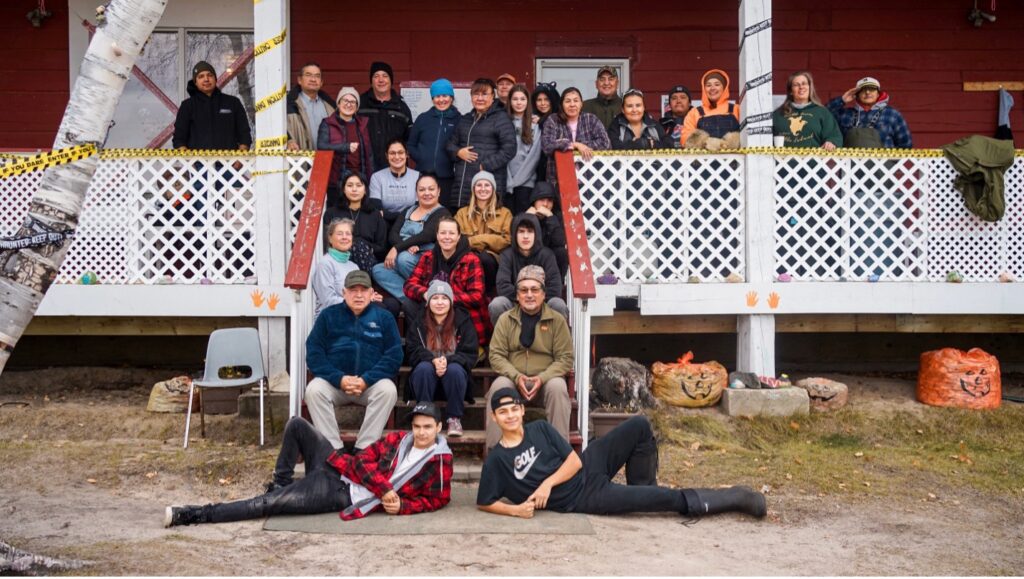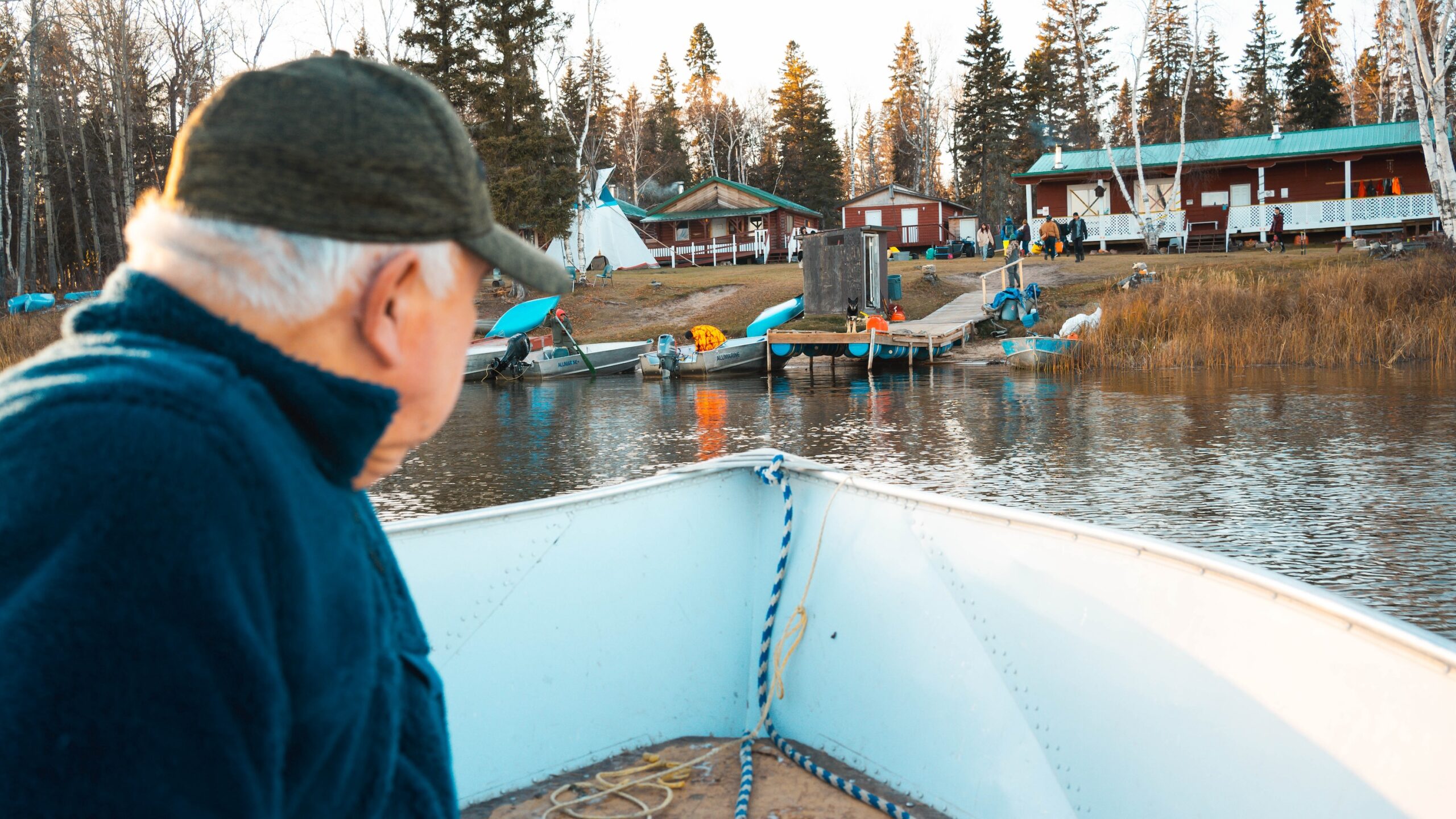Reflecting on MakeWay’s Saskatchewan Program Gathering at Youth Haven
by kelsie kilawna
“Watch your step as you get into the boat,” says Captain Tubby, as we step off the wood panel dock into a fishing boat on Woodland Cree homelands.
Climbing aboard the fishing boat under the guidance of Captain Tubby, the sun casting its warmth and the wind carrying the stories of Woodland Cree homelands, marked the beginning of a transformative journey. Wrapped in coats and toques, over 30 participants sailed to the Youth Haven camp, a sacred space operated by the Lac La Ronge Indian Band Education department.
Over the past year, MakeWay has been a helper to place-based Indigenous leaders of diverse voices, transcending geographies, slowly and intentionally forming a new program, and fostering meaningful partnerships in Saskatchewan. Through a collective commitment to listening, learning, and envisioning a shared future, the MakeWay team has sought to understand the nuanced needs of communities and define the role it can and should play in supporting the region. This gathering was the next step in our shared learning.
Youth Haven: Our home for the week
In many Indigenous teachings across vast homelands, caretaking the future means showing Youth that they matter, and they are a critical part of the local ecosystem. Through the camp, Youth Haven accomplishes just that. By growing their bond with the land and trusting in one another, Youth from Cree homelands find connection with their identities and responsibilities as Nehiyaw people.
We witnessed evidence of this work the moment our boats arrived at dock.
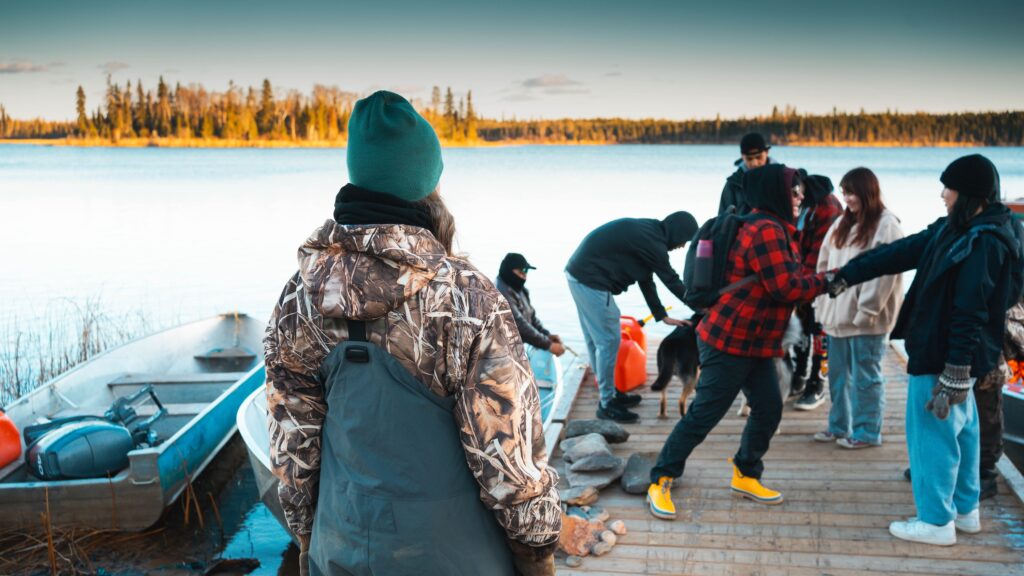
“Tansi,” says one of the Youth as they shake hands with each person joining them at the camp.
There is an unspoken teaching in being a host, and these Nehiyaw Youth were enacting it by greeting the people. To greet, host, and caretake visitors to your homelands is an incredible act of love for the land. As Indigenous Peoples, spirit, body, and land are connected – we are one with the land and speak for it. Greeting and hosting visitors affirms they are welcome guests. It’s a way we enact self-determination while also opening our hearts and sharing a land’s energy or spirit.
Once everyone got off the boats, we headed to our cabins where the Youth had already warmed the space by caretaking our fires. It was such an incredible act of kindness that reminded each of us how grateful we were for the many hands that made our cabins warm.
Shortly after, we shared in a beautiful meal created by the camp cooks – foods harvested right from the lands we were visiting. It nourished each of us and began our time together in a good way.
And as we climbed into our beds on our first evening at camp we heard many whisperings of the beauty of the Cree night sky that lulled us off to sleep.
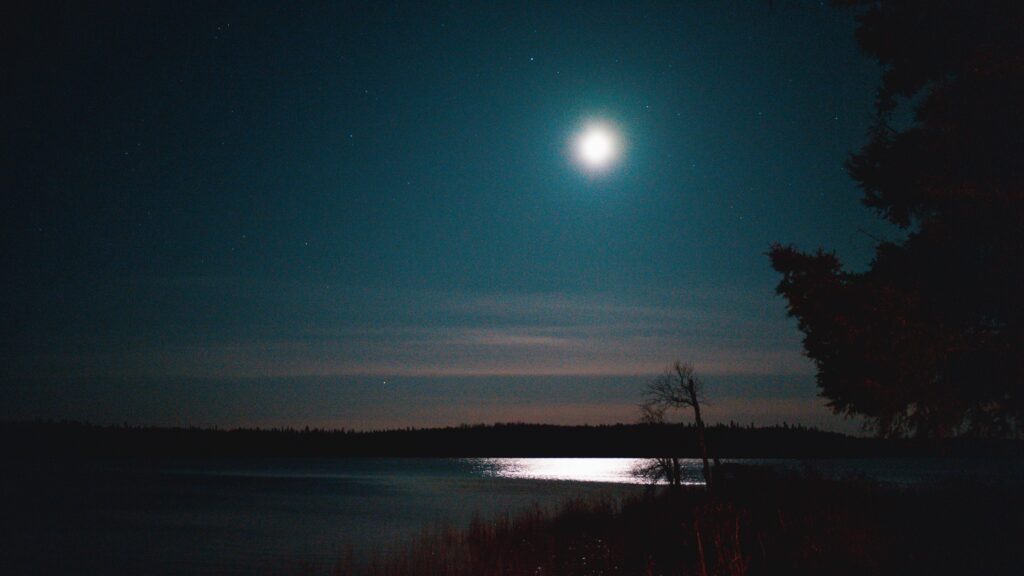
Rooting Us in Place: Story of the camp
The next morning, after we awoke and the hide tanning began, we took a moment to pause and hear the story of the camp and how it came to be. Coming to a shared understanding of the place played a crucial role in solidifying our connection and showing respect for the work and time we committed to.
The camp spoke its prayer into existence through the visionary Roger Ratt, founder of Youth Haven.

Dreams don’t come to us without purpose, they come to us as a message from spirit. And for Roger, his dream was Youth Haven.
Watch for the inspiring story on how the camp came to be.
After hearing Roger’s story, participants felt grounded and rooted to place, understanding more deeply the spirit of the land where we stood.
Sharing Stories
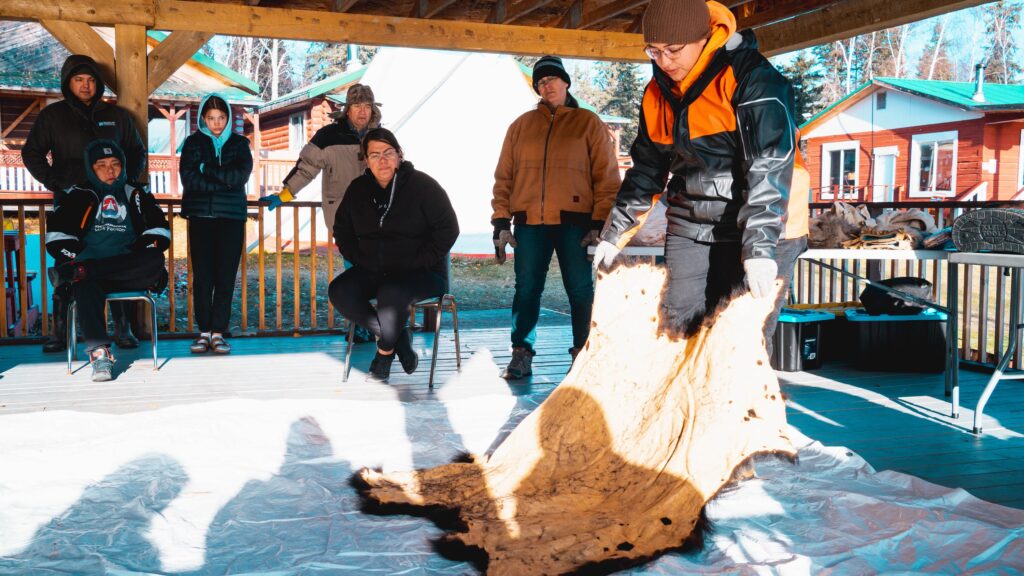
The loose agenda meant to guide our time together quickly faded away as we were guided instead by the spirit’s schedule, lovingly referred to as “Indigenous time.”
We learned about tanning hides – sitting together stitching hides as laughs filled the lodge. We took camp naps, shared knowledge, and heard the stories from communities throughout Cree homelands that inspired us.
Jason Cardinal, Manager of the Riverside Market Garden in Flying Dust First Nation, shared their origin story and knowledge around their expanding honey operation.
“The Market Garden started in 2009., first starting with five acres and has now grown to fully utilizing 170 acres. Our main crop is potatoes, we plant about 50 acres of potatoes every season. Our vegetable garden is anywhere from five to ten acres at any given time,” he says.
“This year we added honeybees we had 165 hives at the start, and we’ve been growing our hive count this year in just a short period of time we’ve gotten it roughly to 250 and harvested 50 barrels of honey this season which is really good for us.”
It was stories like Jason’s that circulated throughout the lodge, alongside those of Rebecca Sylvestre who shared her story of why food security in her home community of Turner Lake is so important to her.
Rebecca envisioned, created and nurtured the Turnor Lake/Birch Narrows Community Food Centre, where she continues to guide the work. As Saskatchewan’s first Community Food Centre, and one of three Indigenous food centers in Canada, share homeland food practices and teachings as a way of emphasizing sustainable foodways.
Their program not only enhances food access but also preserves and passes on place-based food knowledge through activities like community gardens, food preparation workshops, and land-based Youth programs.
Among all the knowledge-sharing, participants also took part in a trading night, where they traded items from their homelands with one another. The evening was memorable, and many folks left with items such as sweetgrass, honey, wild rice, ribbon skirts, and tools – things they wanted and needed. Elders, Youth, and participants were all engaged in the process, and it was a good reminder that trading goods and knowledge is a valuable practice that can continue beyond our time together.
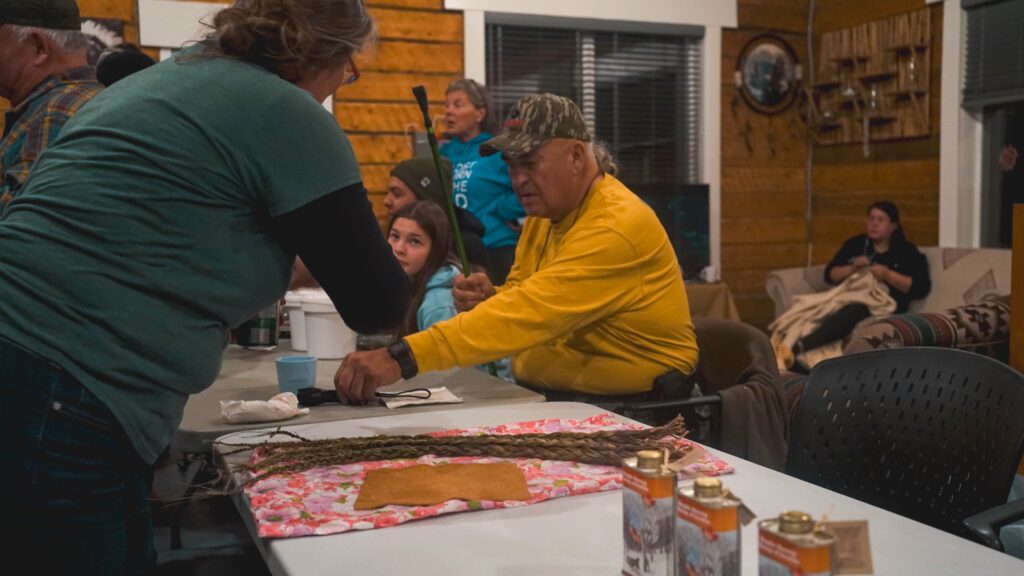
The dreaming never stops
The trip came to an end much quicker than anticipated as ice began to take form over the lake. As the only way out was by boat, our hosts told us it was safest to depart a day early.
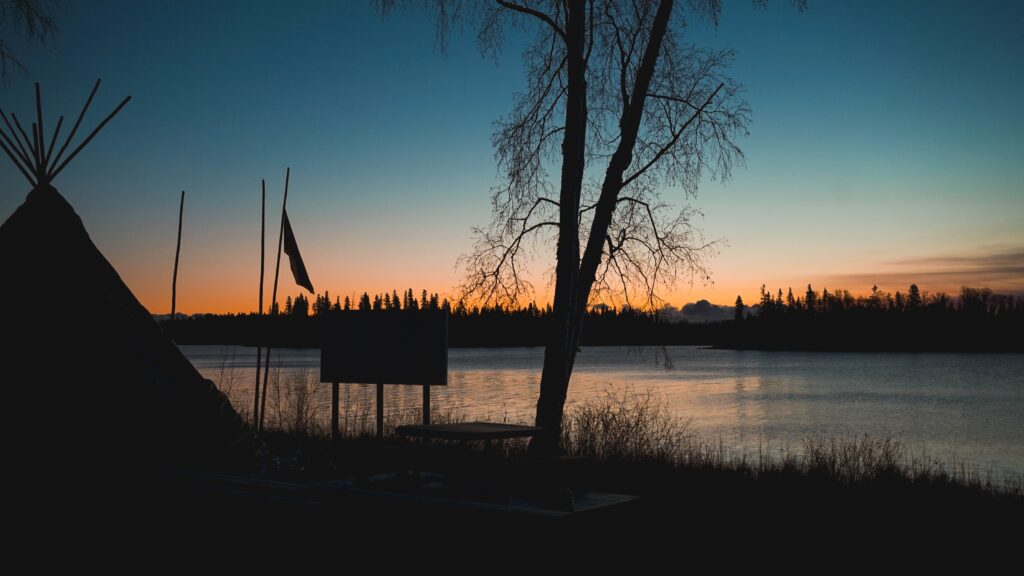
After bonding over stories (some true, some slightly and lovingly embellished), laughs, and teachings, it was time to leave Youth Haven with more friends and knowledge than when we arrived.
On our journey home, Chief Tammy Cook-Searson invited us to join the community for a fish fry feast, where we convened one last time sharing what we were grateful for over a beautiful meal created by the people and from the land.
We left the fish fry ten pounds heavier, with many more ways to dream about how we can work together towards this newly forming collective vision of MakeWay’s Saskatchewan program. At the heart of this journey is a commitment to active listening and learning – alongside community members, Elders, and Youth – to ensure that every step we take aligns with the aspirations and needs of the communities it serves.
All on “Indigenous Time.”
